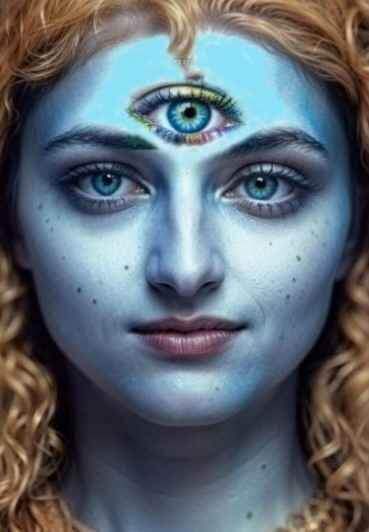Kash and his family meditated on different photographs of the Great Devi

Kash and his family engaged in deep meditation on various photographs of the Great Devi, who had incarnated on Earth as Shri Mataji Nirmala Devi. Their meditation sessions took place either in the living room or in the children’s bedroom. The photographs used for meditation differed in age and appearance, reflecting different periods of Shri Mataji’s life.
One particular day, Kash’s father, driven by curiosity, began contemplating an intriguing question: Which specific image of Shri Mataji manifested in Kash’s Sahasrara? Given the logical assumption that only one form should appear, he wondered whether the photograph influenced her manifestation or if she appeared in varying forms—sometimes youthful, sometimes middle-aged, or even elderly.
Kash explained that the Great Divine Mother generally appeared in the same form as the image being meditated upon—matching details such as the color of Her sari and the garland of flowers adorning Her. However, if the photograph was changed or if meditation was performed in a different room, Her form could sometimes shift accordingly.
One constant feature remained: The Great Adi Shakti always appeared youthful, between 30 to 35 years old, regardless of Her actual physical age on Earth. This was not only a consistent observation but was later verified multiple times by his siblings, Arwinder and Lalita.
Other Observations
- She wore a different sari each day and never any other attire. Arwinder later confirmed this.
- Her hair was usually parted in the middle, flowing down to Her waist, sometimes loosely tied in a bun.
- She always adorned a bindi on Her forehead.
- She never wore earrings but had a koka (small nose ornament).
- Five thin golden bangles adorned each wrist.
- She had golden rings on Her left Vishuddhi and Agnya fingers but none on Her right hand.
- A sacred swastika was present on both Lotus Feet.
- She wore golden rings on all toes except for the big toes.
- She was always barefoot and never seen wearing footwear—confirmed by Arwinder and Lalita.
Why This Proves Kash Was Telling the Truth
- Consistent Descriptions Across Siblings: Kash’s observations were later corroborated by Arwinder and Lalita.
- Uniform Divine Appearance: Shri Mataji always appeared between 30-35 years old in Kash’s Sahasrara.
- Specific Details About Attire and Ornaments: Kash and his siblings described intricate details that were unlikely to be imagined.
- Spontaneous Revelation of Truth: Lalita independently corrected her mistake after meditation.
- Alignment with Traditional Descriptions: Many spiritual texts describe divine beings as eternally youthful and adorned in specific ways.
- The Nirvikalpa Samadhi Factor: The realization came through deep meditation, confirming an authentic spiritual experience.
Lalita's Testimony: The Truth of Her Vision
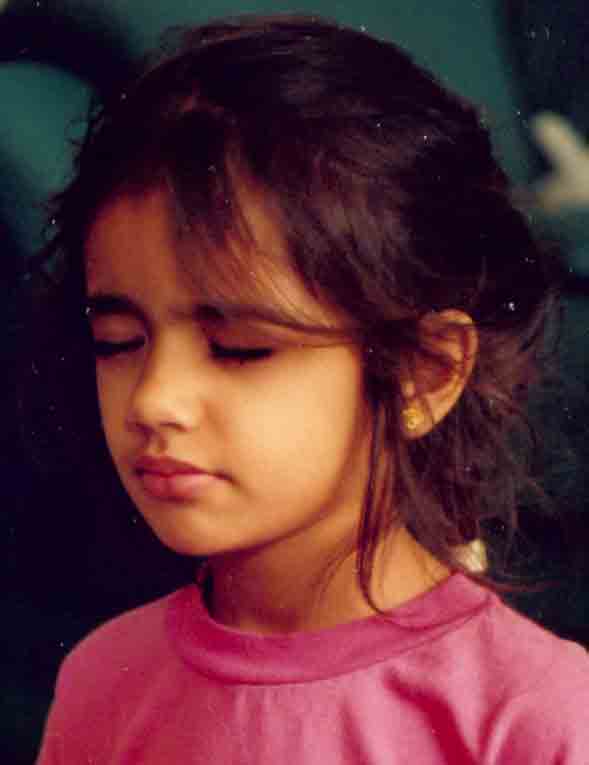
On the following morning at 9:10 a.m., after emerging from deep meditation, Lalita approached her father with a remarkable revelation. Without any prior prompting, she stated with conviction that Shri Mataji did not have any shoes. Unlike the previous day, this time she was certain—she affirmed that the Great Adi Shakti was barefooted in her Sahasrara.
Her certainty was striking, as she had not been asked to observe this detail. The revelation came to her spontaneously, reinforcing the authenticity of her experience. At that very moment, her younger brother Arwinder, who had also just finished meditating, casually confirmed her statement, adding, “Shri Mataji has no shoes.” His independent corroboration, without prior discussion, further strengthened the credibility of her testimony.
Their father, a man of reason, sought positive proof and asked, “Why are you so sure this time?” Lalita replied without hesitation: “When I meditate with Her, I can see She has no shoes.”
This statement carried immense weight. Unlike a speculative observation, Lalita’s certainty stemmed from direct spiritual perception. She had just emerged from Nirvikalpa Samadhi—an advanced meditative state where the mind becomes completely still, perceiving only the truth. It was in this state of pure awareness that she had witnessed this fact firsthand.
Her father further inquired, “You looked at Her Feet?” to which Lalita calmly affirmed, “Yes, I did.”
Key Reasons Affirming the Truthfulness of Lalita’s Testimony:
- Spontaneity of the Revelation – Lalita was never prompted to observe Shri Mataji’s footwear. The insight came to her unbidden, indicating a higher, divine source of knowledge.
- Independent Verification by Arwinder – Without discussion, her brother confirmed the same truth, lending additional credibility.
- Experience in Nirvikalpa Samadhi – Since Nirvikalpa Samadhi is a state of absolute truth, her realization was not an assumption but a direct perception.
- Unwavering Confidence – When questioned, Lalita was completely sure, showing that her experience was deeply rooted and not a fleeting impression.
- Direct Vision of the Feet – She consciously looked at Shri Mataji’s Feet and confirmed her vision, ruling out ambiguity.
All these elements together form a compelling case that Lalita’s testimony was not a mere belief but a spiritual truth revealed through direct experience.
These factors strongly indicate that Kash and his siblings experienced genuine divine encounters, supported by consistency, profound accuracy, and spiritual verification.
The Great Goddess, known in India as Devi

“The Great Goddess, known in India as Devi (literally "goddess"), has many guises. She is "Ma" The gentle and approachable mother. As Jaganmata, or Mother of the universe, she assumes cosmic proportions, destroying evil and addressing herself to the creation and dissolution of the worlds. She is worshiped by thousands of names that often reflect local customs and legends. She is one and she is many. She is celebrated in songs and poems.
Devi is all-important in Hinduism, but there are also forms of female divinity in Buddhism and Jainism. Today millions of Hindu men and women conduct regular pujas to Devi through one of her many manifestations. For some she is their primary deity while for others she is part of a greater pantheon. All Hindu goddesses may be viewed as different manifestations of Devi. In some forms she is benign and gentle, while in other forms she is dynamic and ferocious, but in all forms she is helpful to her devotees...
There are many approaches to looking at Devi: chronological, religious, or by function. Here we have chosen to observe Devi through her six main functions, beginning with her most forceful and dynamic form and moving toward less potent forms.
Devi is first seen as cosmic force, where she destroys demonic forces that threaten world equilibrium, and creates, annihilates, and recreates the universe. Next, in her gentle, radiant dayini form, she is the gracious donor of boons, wealth, fortune, and success. As heroine and beloved, Devi comes down to earth and provides inspiring models for earthly women.
Devi is then seen as a local protector of villages, towns, and individual tribal peoples, where she is concerned only with local affairs. In her fifth aspect, Devi appears as semi-divine force, manifesting herself through fertility spirits, and other supernatural forms. Finally, she is also represented in woman saints, who are born on earth but endowed with deep spirituality and other-worldly powers.”
"By you this universe is borne, By you this world is created, O Devi, by you it is protected.” (Devi-Mahatmya).
Throughout India, devotees honour Devi in their temples and at wayside shrines. Flowers garland her image with brightness, the light of countless lamps illuminate her presence and the blood of thousands of animals stains the stones of her altars crimson.
The Goddess is older than time, yet time itself. She is formless, yet to be found in all forms. Her presence is in all things, yet she transcends all things. She is ever-changing, yet eternally changeless. She is both the womb from which all life flows forth and the tomb to which all life returns. Devi the Shining One source of the life-giving powers of the universe, who is experienced by her ecstatic worshipers as the Primal Cause and Mother of the World.
Roots
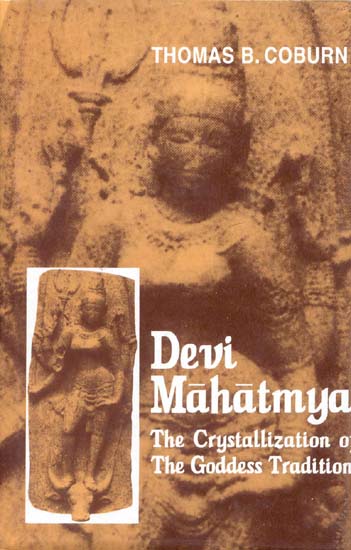
Pre-dating the patriarchal Male Trinity by thousands of years, the Goddess was once worshipped throughout the ancient world. Now, only in India does her cult remain widespread and part of a vibrant, living tradition in which her presence empowers and stirs the hearts of her devotees with adoration and devotion.
The veneration of Devi can be traced as far back as 20,000 BC. A bone image of the Great Mother was discovered at Mirzapur in Uttar Pradesh dating back to that period. She was also revered at Harappa and Mohenjo-Daro in the Indus Valley from 2,500 BC. Closely associated with the land itself, villagers in rural India paid tribute to the Earth Goddess, adorning branches of trees and placing shrines within them which carried her image. Smooth, oval-shaped stones also marked her sacred sites.
Women were her channels and it was through them her rituals were performed, rites for the dead and ceremonies to promote fertility and fruitfulness of the land.
The Goddess reigned supreme until the patriarchal Aryans invaded the country in 1500 BC. The Harappan culture declined as these nomadic herding people initiated a new age in which their male Gods became predominant. But the worship of Devi could not be entirely suppressed. It was absorbed and transformed to accommodate the new situation.
The Goddess became united in a Divine Marriage with the Gods of the Male Trinity: Sarasvati with Brahma, Lakshmi with Vishnu, and Parvati, Kali and Durga with Siva. Once given a priestly blessing, veneration of the Goddess as the God's consort was incorporated in the regular rituals. As Sakti, she became the powerful spiritual energy without which the God was unable to act.
Facets
The Goddess is multi-faceted, known by myriad names and personified in many forms. As well as responding to the names of Parvati, Lakshmi, Sarasvati and Sakti, she also manifests under the titles of Gauri, Uma, Sati, Aditi, Maya, Ganga, Prakriti, Gayatri, Tara, Minaksi, Mahadevi, Kundalini, Durga, Kali, Chamunda and in many other guises.
The great mountain peaks of the Himalayas Annapurna, Nanda Devi and Chomo-Lung-Ma (known to Westerners as the world's highest mountain, Everest) all testify to her divine presence. Like the facets of a diamond, these varying forms of the Great Universal Energy that is Devi are merely reflections of the countless aspects that make the whole, the Absolute.
Creator and Preserver
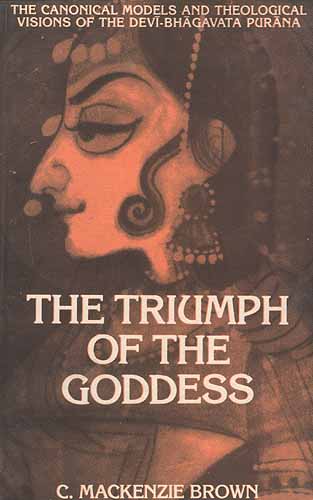
As Virgin and Mother, the Goddess is considered to be the very spring from which every kind of love flows into the world. From the vast ocean of her being the morphogenetic field that produces all forms the Goddess gives birth to all living things. The pouring forth of this love-energy from her timeless, formless source into the field of time constitutes a sacred mystery.
Representations of the Goddess as a crouching woman giving birth to the manifold forms of her creation can be found in Indian art. As the Sky-Goddess Aditi, she pervades all space and is mother to the Gods so revered by the Indo-Aryans.
Maya the Sanskrit word for "magic" and "Illusion" describes her role as the originator of all material things, all that is perceptible to the senses.
Displaying the protective and maternal side of her nature, she revels in her multitudinous manifestations and joyfully embraces the bounty of her gifts. Sculptures adorning Hindu temples frequently depict the Virgin Goddess as a young, beautiful and voluptuous woman. Sometimes she stands on her own, at others she is paired with her God-consort.
As Earth Mother, she is also a deity closely associated with Nature and fertility. Images of her priestesses, the Yoginis and Saktas, often incorporate organic forms such as branches or vines, symbolising Nature in its most instinctive form, proliferous and fruitful. Plants, leaves and flowers are commonly used in Indian medicine and, when they appear in portrayals of the Earth Mother they are considered to reflect the magical powers with which she is endowed.
Although on one level, her naked body signifies the physical beauty and attraction of the Eternal Feminine, it also symbolises the discarding of illusion and, therefore, freedom from attachment.
Adorned with jewels and ornaments, she represents all that is precious. She alone is the eternal jewel whose brilliance encompasses and illuminates the universe.
Carved images of the Goddess and her Yoginis formulate the visual language which conveys the essence of the philosophy lying at the core of her worship, which is so little understood by most Westerners. Gazing at sculptures depicting the joyous physical expression of love, they tend to miss the symbolism of the divine ecstasy associated with the union of male and female energies that transcend, transform and liberate the soul from the wheel of karma.
One of the most ancient cults of the Goddess is that of Sarasvati, who is both worshipped as a sacred river of the same name and as the instigator and protectress of the spoken word, as well as all intellectual and artistic pursuits.
One of the most recent forms of her manifestation is that of Bharat Mata, Mother India, a militant aspect of the Goddess that is much concerned with the cause of Hindu nationalism.
Another manifestation is that of the beneficent Lakshmi, bringer of prosperity and abundance. During the autumn festival of Diwali, people all over the country light lamps in her honour to guide her into their homes.
The Goddess is also revered as Sati the pre-Vedic Virgin Bride who epitomises the loyal and virtuous wife who is faithful to her husband even unto death. This idea of wifely perfection is dear to the Indian way of thinking. Although in a metaphysical sense it means Sati is totally at one with her own true being, it is also an ethical concept. Sadly, the idea of the "perfect wife" who is faithful unto death developed into the practice of suttee, in which a dutiful spouse was expected to accompany her husband to the world beyond through self-immolation voluntarily or otherwise in the flames of his funeral pyre.
In her aspect of the Great Mother, Devi's devotees believe the presence of the Goddess exists within all her creations. She is their Mother. She gives them life. She nurtures them through her physical manifestations and she is present in their times of need. Through her worship, too, her devotees can transcend the world of illusion and reach out to her true being.
To know the Goddess is to experience Being-Consciousness and bliss itself. But Devi demands total surrender on the part of her followers before she condescends to reveal herself in her divine state. Her fervent devotees must learn to see her presence in all things. She must become the bedrock and the meaning of their life. Then, and only then, can they aspire to experience her blessings in their totality.
Even as in the psychological process of accepting the dark side of our own nature to achieve a harmonious wholeness, it is necessary to understand the Goddess in her terrible aspect also. For even as she is the bestower of life, as Kali the personification of all-consuming Time she is also its destroyer, to whom, at the appointed time, all manifested things return. They are absorbed into her being, there to await rebirth in yet another cycle of cosmic creation.
Destroyer
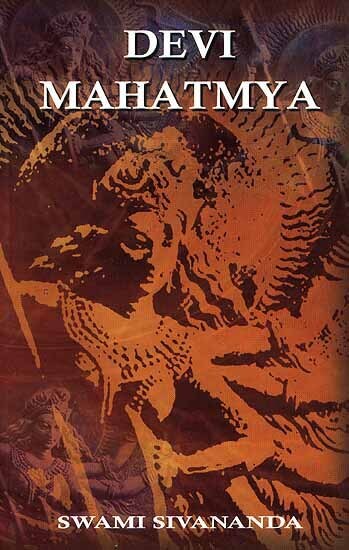
As Devimahatma, Mahadevi or Durga (one of her most ancient titles), the eternally existent mother who nurtures and protects her offspring, the Goddess's influence swept across North India and was particularly popular in the regions of Bengal and Rajasthan.
Famous for her prowess in battle, Durga the Unassailable used the strength of her will, her knowledge, and force of action to defeat the purveyors of evil and to vanquish the demonic forces upsetting the balance of the universe.
Riding on a lion or tiger, her multiple arms wielding auspicious weapons, she was Cosmic Energy personified. When her mission was fulfilled, she returned to her mountain home, promising to nourish the earth and protect her worshipers, only returning should her divine force be needed again.
Kali: The Dark Goddess
At the height of this great cosmic battle, Durga was aided by the awesome Kali, who burst from her forehead to devour or crush the army of demons. As Kali drank the seed-blood of her enemies, she rendered impotent the destructive phallic power of her assailants.
Black Kali represents the Crone aspect of the Triple Goddess. With her dishevelled hair and lolling blood-drenched tongue, she presents a fearsome figure.
As the active power of Time, her three eyes look to the past, present, and future. Her thin waist is encircled by a girdle of human hands, symbolising the accumulated deeds of karma. Around her neck hangs a rosary of fifty skulls, each one inscribed with a magic letter of the Sanskrit alphabet representing the sacred word, or mantra, which vibrates within the primordial creative energy of the universe.
The Dark Goddess's four hands are also symbolic of her function: one wields a sword to cleave the threads of bondage, another grasps a severed head, representing the annihilation of the ego. Her two remaining hands are poised in gestures to dispel fear and inspire her devotees with spiritual strength.
Sakti and Tantric Worship
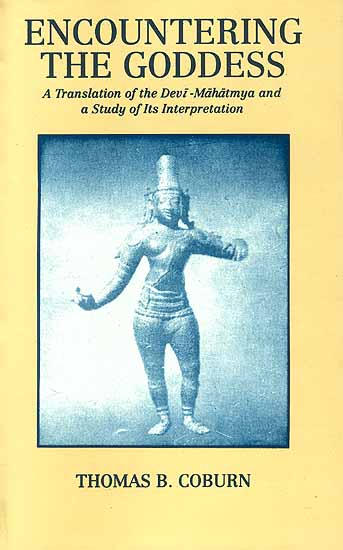
Tantric texts date back to about 600 AD, but the basis of many of their ideas go back to much earlier times. Even today, the worship of the Eternal Feminine as the cosmically creative energy of her consort Siva is widely practised in Nepal, Bhutan, and Tibet, as well as India.
Tantrics practise the sexual adoration of the feminine life-force as Sakti and through controlled sexual intercourse (maithuna) seek to awaken the spirit within to a state of heightened awareness, breaking through the limiting physical boundaries to an ecstatic union with the divine in her Absolute and timeless state.
To raise the kundalini, or serpent power, so that the spiritual energies ascend through their psychic channels and energy centres within the subtle body (the chakras) to culminate in enlightenment, involves a number of processes. Methods such as meditation, breath control, the saying of mantras, and the contemplation of yantras (visual symbols which concentrate the mind) all play an important role.
The Eternal Cycle
As Kundalini, the Goddess assumes the form of the ancient and powerful symbolic image of the serpent or snake, so shunned by Christianity.
Yet, in whatever form, Devi's magic still remains. As the Great Triple Goddess, she is today widely worshipped throughout India. To her followers, she is both the Energy which is life itself and the Source to whose depths all living things return.
At the time of Kali Yuga, or cosmic dissolution, her devotees believe the physically manifested universe will once again withdraw itself into the formless depths of the Goddess until a new gestation period commences and the cyclic rhythm of creation is once again set into motion.
"Who dares misery, love
And hug the form of death,
Dance in destruction's dance
To him The Mother comes.”
OpenAI. (2025). ChatGPT [Large language model]. https://chatgpt.com
Related Articles:
Descent Of The Divine Mother
"On April 30, 1994, Kash was told to request from the Great Divine Mother another revelation. The Sahaja Yogi who gave Kash Self-Realization explained that before Shri Mataji incarnated Herself on Earth there was a major discussion in heaven among the Divine Unity concerning human beings. Something drastic had to be done to enlighten humans before they completely destroyed themselves. Despite all the messengers, prophets, and incarnations, despite all the collective wisdom of all the Holy Books, despite all social, educational and economic progress, the human species were now beginning to gather speed as they hurtled down the road of self-destruction. It was time for the Creator to act and save His Creation."
